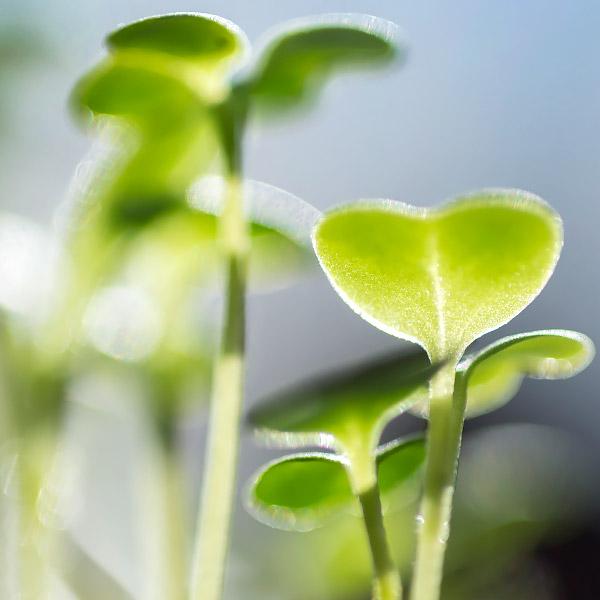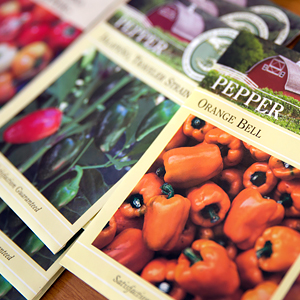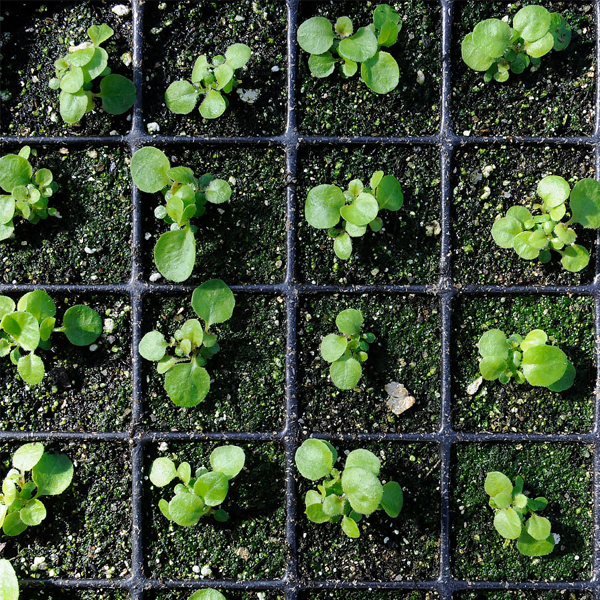While there's still a chill in the air, gardeners can find comfort in seed catalogs as they think about spring. Growing plants from seeds gives you an opportunity to grow more unusual flowers, vegetables, and herbs than you might find at a local garden center. And it can save you some big bucks. A 1-gallon pot of purple coneflowers (Echinacea purpurea), for example, may cost $8 to $10. A packet of seeds can provide dozens of the same plant for about one-third of the price.

Each seed holds an embryonic plant that’s resting and waiting for the right conditions to germinate. One of the most satisfying things a gardener can do is plant a seed, nurture it, and watch it grow. It’s an enjoyable way to connect with nature. And it’s a wonder-filled adventure for children and adults.
Here’s another reason to think about sowing seeds: a seed is a tiny time capsule connecting the future to the past. In 1812, Thomas Jefferson grew Painted Lady runner beans (Phaseolus coccineus ‘Painted Lady’), at Monticello. Today, you can buy the seeds of this edible and ornamental annual vine to grow in your own garden. Gardeners have grown the Empress of India nasturtium (Tropaeolum majus ‘Empress of India’) in the United States for more than 125 years. You, too, can grow this beautiful Victorian heirloom from seed and use the plants in the ground or in hanging baskets.
Seed Packet Lingo

Seed packets generally contain most of the instructions you’ll need, such as how deep to sow the seeds. Sow them too deep and they will rot. As a rule, seeds should not be buried any deeper than their diameter. For example, tiny seeds like those of lettuce should be barely covered by potting mix. The packet should also tell you the number of days from seed-sowing to germination (sprouting). If you’re growing vegetables, it should tell you the days from transplanting outdoors to the first harvest.
Many vegetable seeds can be started indoors while others, such as beans and squash, are sown directly in the garden when warm weather arrives. If you are sowing seeds of tomatoes, eggplant, peppers, or other warm-season edibles indoors, keep in mind that the average last frost date for the Chicago area is May 15. (These warm-loving veggies should not be planted outdoors until after that date because a frost or cold weather will set them back, or worse, kill them, and you’ll have to start over or buy plants.) If you sow them indoors too early (more than two months before May 15), tomato and pepper plants will become “leggy” with stretched stems unless they are grown under lights.
Supplies

You’ll need a bag of seed-starting mix, not heavy garden soil that has poor drainage and may harbor disease. A container, even a clean milk carton, works fine, as long as it has drainage holes in the bottom and a tray to catch water. Open the bag of potting mix and lightly moisten it before putting it into the containers. This will prevent the lightweight material from blowing around as you work with it. Then, sow the seeds and cover the soil with a sheet of plastic wrap. If you are growing the seedlings in a sunny window, remove the wrap during the day to prevent excess heat.
Nasturtiums, sweet peas, and morning glories have hard seed coats that slow germination. Soak them for an hour or two before planting to speed up the process. Plant them and once they sprout, place the container in a cool, bright, well-ventilated area and watch the miracle unfold.
A tray of seedlings is a starting point. When there are too many seedlings in one pot, use scissors to snip off the weakest growing plants at the soil surface. Most seedlings will need to go into larger pots before heading outside. When transplanting, handle the plants by the leaves, not the delicate stems. Plant them at the same depth and don’t bury the stems.
Nina Koziol is a garden writer and horticulturist who lives and gardens in Palos Park, Illinois.


